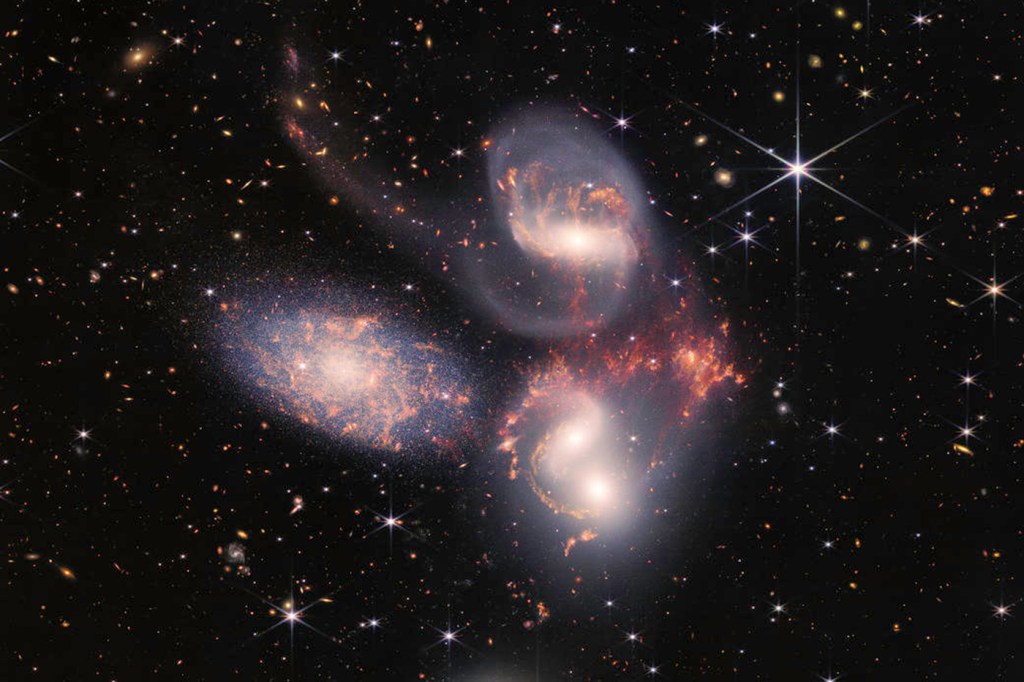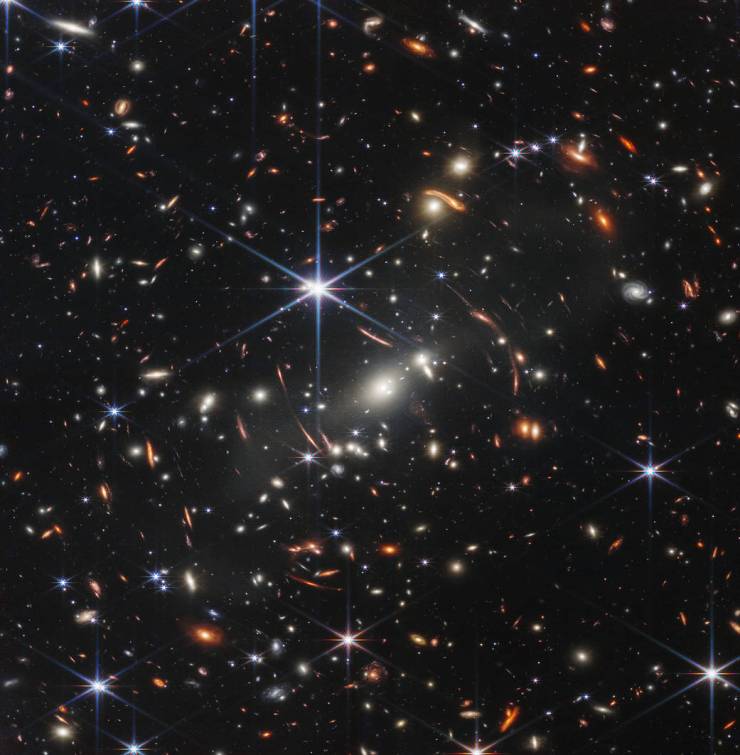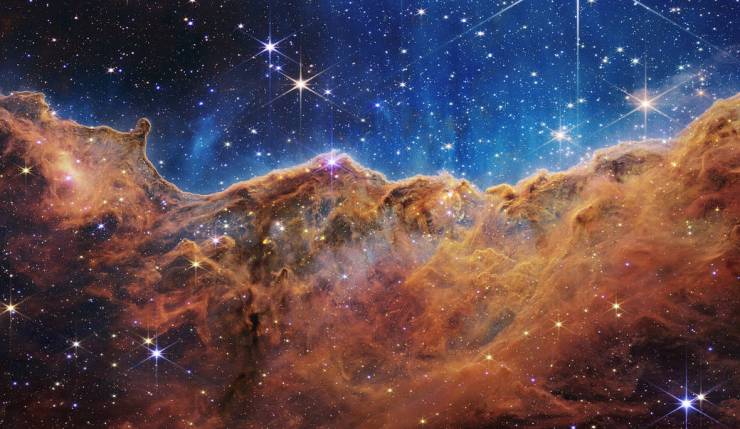Video: Webb telescope will alter view of cosmos, thanks to a Northeastern graduate

The stars were out to shine on Tuesday as NASA revealed the first full-color images taken by the James Webb Space Telescope, the largest and most powerful telescope ever sent into space.
Galaxies engaged in a cosmic, gravitational dance, dying stars ejecting gas and dust, active black holes and a star being born in the Carina Nebula: The five images revealed Tuesday show the vastness of space with an unprecedented level of detail. And one Northeastern alum is partly to thank for that.
In 1976, Robert Gonsalves, a former Northeastern electrical engineering professor and Ph.D. student, wrote an article on an imaging technique known as phase retrieval, which helps fix flaws in imaging devices, similar to an autofocus on modern cameras or a prescription for glasses. It was a novel idea, but he never thought the idea would escape the bubble of academia.
“It was totally useless for the next 15 years––useless until it wasn’t,” Gonsalves said.
NASA launched the Hubble Space Telescope in 1990 with a warped mirror that produced low quality images. In its search for solutions, NASA contacted Gonsalves and ended up recruiting him to fix the telescope using phase retrieval. Within two months, Gonsalves had devised a prescription for the telescope. Almost 20 years later, in 2008, NASA contacted Gonsalves again, this time to help with its still-in-development James Webb Space Telescope.
“They were calling me the father of phase retrieval, and I would say, ‘No, I’m the grandfather,’” he laughed.
Now, 46 years after Gonsalves wrote a paper that he thought would collect dust in an academic journal, his ideas have helped produce the most detailed images of outer space in history. And Tuesday’s reveal is just the beginning of the telescope’s scientific operations, which could completely alter humanity’s understanding of the universe and spark the dawn of a new era in astronomy.
“We’re going to fill in this region of cosmic time that we really don’t understand,” Jonathan Blazek, Northeastern assistant professor of physics, said. “I think in the next five years we’ll have a fundamentally different understanding of early galaxies and stars that we just don’t have now.”

The Webb telescope features a more than 21-foot gold-plated beryllium mirror that is designed to capture infrared light, which is invisible to the human eye but is able to travel billions of light years across the universe. Using the infrared spectrum, the telescope can spot light from the earliest moments of the universe, just after the Big Bang.
The first images captured by the Webb telescope take full advantage of tools like the telescope’s Near-Infrared Camera. On Monday, President Joe Biden unveiled the first image: a deep field image of galaxy cluster SMACS 0723. Although the image captures only a slice of the universe––a patch of sky the size of a grain of sand held at arm’s length––it is teeming with stars and galaxies.
“To go from an exoplanet and when a star forms and how a star dies and the galaxy fairly early on, all these things Webb can do and all this means that Webb can take very high-quality image, high-quality data,” said Dacheng Lin, Northeastern research associate professor of physics. “They can make a breakthrough on all these things.”
At the time it launched, the Hubble Space Telescope was one of the largest and most advanced space telescopes ever created, but the Webb telescope is an upgrade in every conceivable way.
“Those [Hubble] images remain incredible, but going from Hubble to Webb, it’s like going from standard def to high def television,” Blazek said.

Ian Lauer, an astrophotographer, said the impact of the first Hubble images was seismic and that “the implication of James Webb is it’s going to be like that but more.”
“Seeing that this tiny, tiny, little piece of sky contained thousands and thousands of galaxies just like our own, it completely changed our perspective of our place in the cosmos,” said Lauer, who worked in the telescope industry. “To me, that’s so beautiful. … It’s going to inspire so many people in ways we can’t yet understand, and that’s the most exciting part about it.”
The Webb telescope successfully launched on Christmas 2021, but it was a long journey just to get it off the ground. A joint effort between NASA, the European Space Agency and the Canadian Space Agency, the Webb telescope has been in development for more than two decades.
For Blazek, the end result of all that work will have long-lasting ramifications.
“For the people who are trying to find the very first stars and the very first galaxies, there’s just going to be a flood [of data],” Blazek said.
However, the Webb telescope’s most important contribution could be its impact on the study of exoplanets, planets outside the Solar System. One of the images NASA revealed this week was a spectrum of an exoplanet’s atmosphere. The telescope captured not only evidence of water but clear signs of clouds and haze in the atmosphere around the hot gas giant WASP-96 b.
“It doesn’t have quite the same flash as some of these other pictures, but it’s likely to be one of the legacies of Webb that’s most important,” Blazek said.
Looking at these groundbreaking images, Gonsalves is thinking about his own legacy: how the work that started at Northeastern has gone above and beyond what he ever could have imagined.
“This is almost like a justification of my life’s work,” Gonsalvez said. “I’m thrilled that it’s being done.”
For media inquiries, please contact Ed Gavaghan at e.gavaghan@northeastern.edu or 617-373-5718.






